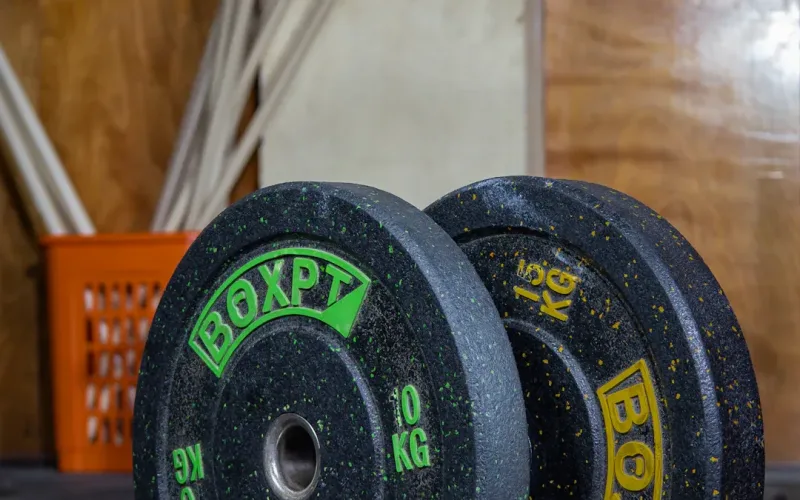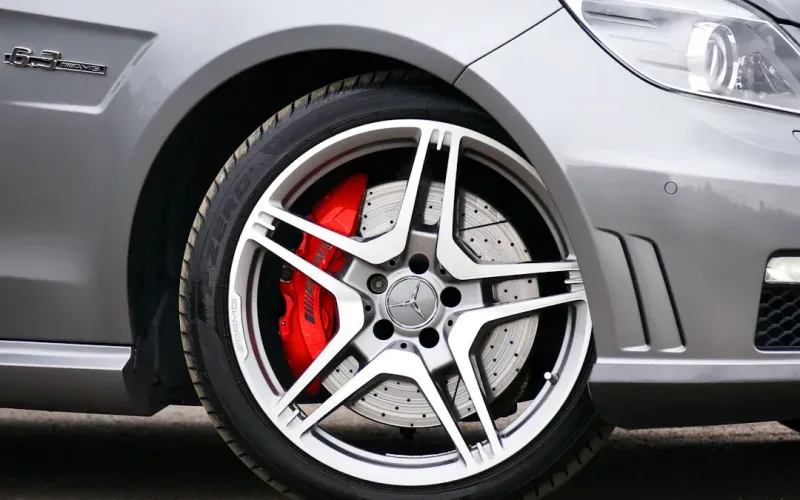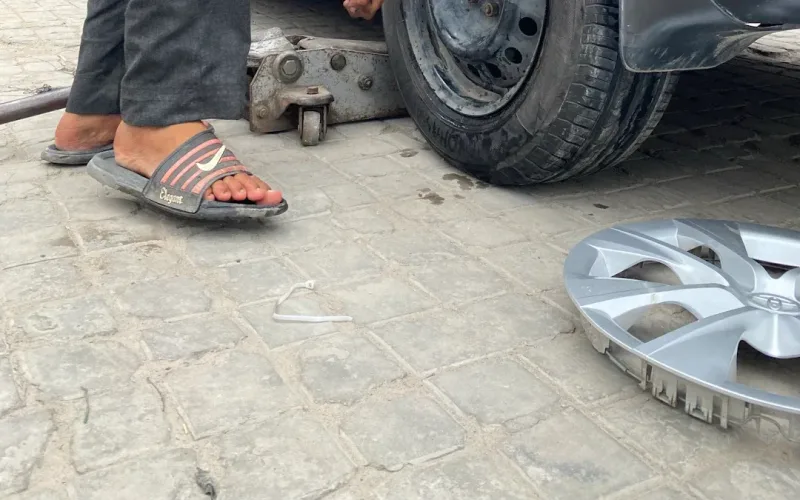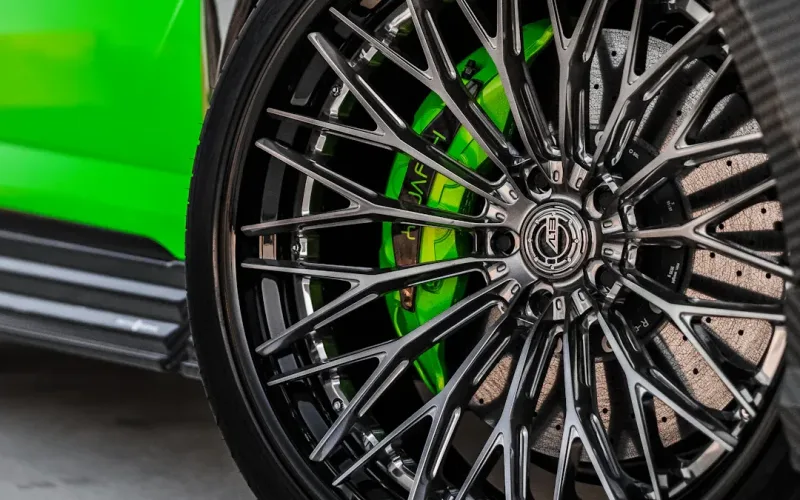Why Steel Adhesive Wheel Weights Are the Eco-Friendly Choice for Tire Balancing


fortuneau
April 27, 2025
How to Get a Stripped Lug Nut Off a Wheel in 2025
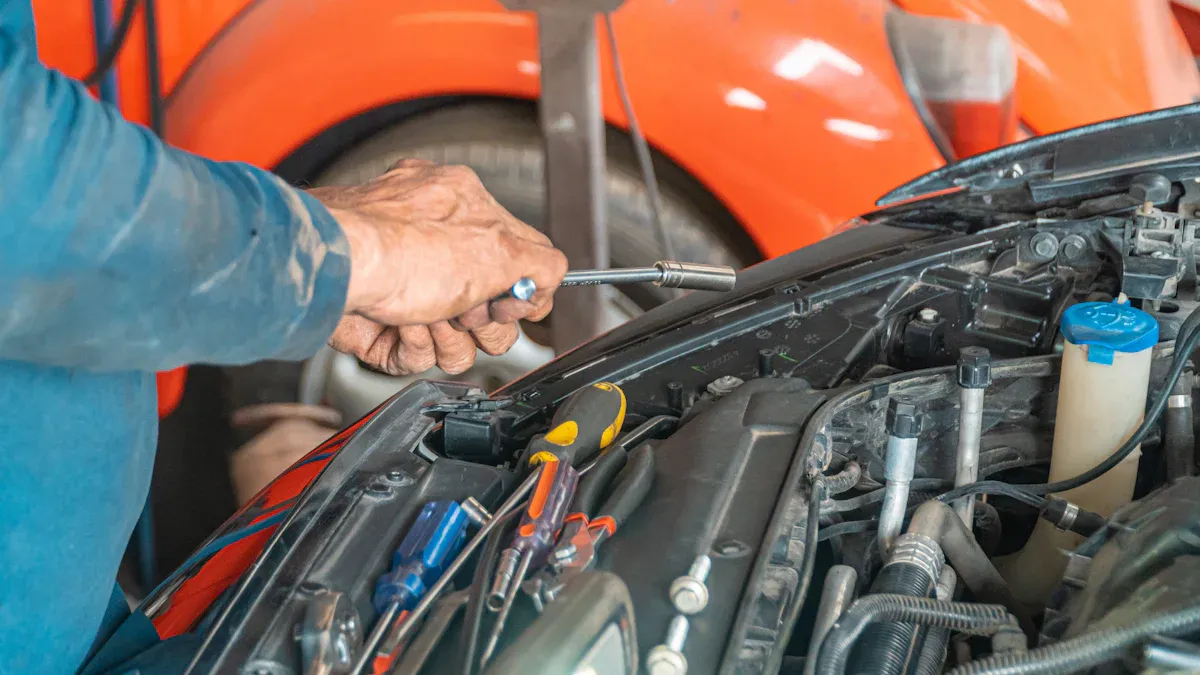
Stripped lug nuts can turn a simple wheel change into a frustrating challenge. You might wonder, “How did this happen?” It often comes down to worn tools or improper tightening. Don’t worry, though—you’ve got options. With the right approach, you can remove that stubborn lug nut without damaging your wheel or wasting hours. Whether it’s using specialized tools or a clever trick, knowing how to get a stripped lug nut off a wheel will save you time and hassle. Let’s dive in and tackle this problem head-on!
Tools to Remove a Stripped Lug Nut

Essential Tools for the Job
When dealing with a stripped lug nut, having the right tools can make all the difference. You don’t need a fancy toolbox—just a few essentials will do the trick. Here’s what you’ll need:
- A 12-point socket (the size depends on your lug nut).
- A breaker bar for extra leverage.
- A hammer to help loosen stubborn nuts.
- A torque wrench to properly tighten the new lug nut later.
- And, of course, a new lug nut to replace the damaged one.
These tools are easy to find at most hardware stores. They’re also versatile, so you’ll use them for other car maintenance tasks too.
Specialty Tools for Stubborn Lug Nuts
Sometimes, regular tools just don’t cut it. That’s where specialty tools come in. They’re designed for tough situations, like removing a stripped lug nut that refuses to budge.
Let’s compare a couple of options:
| Tool Type | Efficiency (Torque) | Success Rate |
|---|---|---|
| Torque Multiplier | Up to 1,000 ft-lbs | High |
| Standard Ratchet | Up to 250 ft-lbs | Moderate |
Specialty tools, like torque multipliers, give you extra leverage. They’re perfect for high-torque situations and reduce the risk of damaging your wheel. On the other hand, standard tools might take more effort and time, especially if the lug nut is rusted or over-torqued.
If you have access to a powerful impact wrench, you’re in luck. This tool delivers high torque quickly, making it one of the best options for removing stubborn lug nuts. It’s efficient, reliable, and saves you from unnecessary frustration.
Safety Gear to Protect Yourself
Safety should always come first. Removing a stripped lug nut can involve a lot of force, so you’ll want to protect yourself. Here’s what you’ll need:
- Safety gloves to protect your hands from cuts and bruises.
- Safety goggles to shield your eyes from flying debris.
- Closed-toe shoes to keep your feet safe in case you drop a tool.
Taking these precautions ensures you stay safe while working on your car. After all, no one wants an injury to ruin their day!
Step-by-Step Guide on How to Get a Stripped Lug Nut Off a Wheel
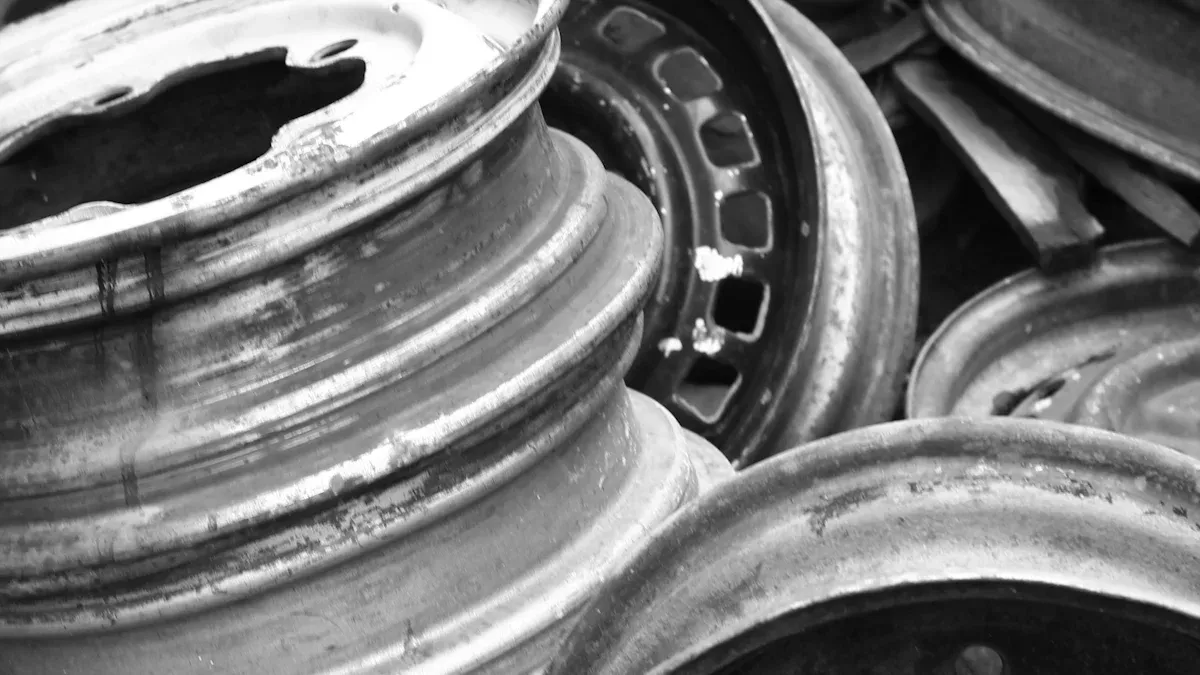
Step 1: Assess the Damage
Before you dive into removing the stripped lug nut, take a moment to evaluate the situation. Look closely at the lug nut and the surrounding area. Is the nut slightly rounded, or is it completely stripped? If it’s only mildly damaged, you might get away with using basic tools. But if the edges are entirely smooth, you’ll need a more advanced approach.
Check for rust or debris around the lug nut. Corrosion can make it harder to remove. If you notice rust, don’t panic—this guide has you covered. Also, inspect the wheel stud (the threaded rod the lug nut screws onto). If the stud looks damaged, you’ll need to be extra cautious to avoid making things worse.
Pro Tip: Take a photo of the stripped lug nut before starting. This can help you explain the issue to a professional if you need assistance later.
Step 2: Apply Penetrating Oil
Penetrating oil is your best friend when dealing with a stubborn lug nut. It seeps into the threads and helps loosen the nut by reducing friction. Grab a can of penetrating oil—WD-40 or PB Blaster works great—and spray it generously around the base of the lug nut.
Let the oil sit for at least 10–15 minutes. This gives it time to work its magic. If the nut is severely rusted, you might need to reapply the oil and wait a bit longer. While you wait, gather the tools you’ll need for the next steps.
Safety Note: Always work in a well-ventilated area when using penetrating oil. The fumes can be strong, so keep the garage door open or work outside.
Once the oil has had time to penetrate, try turning the lug nut with a wrench. If it still won’t budge, don’t force it. Forcing can strip it further or damage the wheel stud. Instead, move on to the next step.
Step 3: Use a Lug Nut Extractor
When the lug nut refuses to cooperate, it’s time to bring out the big guns: a lug nut extractor. This tool is specifically designed to grip stripped lug nuts and twist them off. You can find extractors at most auto parts stores or online.
Here’s how to use one:
- Select the right size extractor for your lug nut. It should fit snugly over the nut.
- Attach the extractor to a breaker bar or ratchet.
- Place the extractor over the stripped lug nut and tap it lightly with a hammer to ensure a tight grip.
- Turn the breaker bar counterclockwise with steady pressure. The extractor’s internal grooves will bite into the nut and twist it off.
If the lug nut still won’t move, don’t give up. Try applying more penetrating oil and giving the extractor another go. Sometimes, a little patience and persistence are all you need.
Did You Know? Lug nut extractors are reusable, so they’re a great investment for your toolbox. They can save you from future headaches when dealing with damaged nuts.
By following these steps, you’ll be well on your way to removing a stripped lug nut without damaging your wheel. If the nut still won’t budge after trying these methods, don’t worry—there are more techniques to explore in the next steps of this guide.
Step 4: Try the Hammer and Socket Method
If the lug nut extractor didn’t work, don’t worry—you’ve got another trick up your sleeve. The hammer and socket method is a tried-and-true way to remove a stripped lug nut. It’s simple, effective, and doesn’t require fancy tools.
Here’s how you can do it:
- Find a slightly smaller socket than the stripped lug nut. It should fit tightly over the nut, even if you have to tap it into place.
- Place the socket over the lug nut and grab a hammer.
- Gently tap the socket onto the nut. The goal is to force the socket to grip the stripped edges. Be careful not to hit too hard—you don’t want to damage the wheel or the socket.
- Once the socket is firmly in place, attach a breaker bar or ratchet to it.
- Turn the breaker bar counterclockwise with steady pressure. If the nut starts to move, you’re on the right track!
This method works because the hammer forces the socket to bite into the stripped lug nut, giving you enough grip to twist it off. If the nut still won’t budge, try applying more penetrating oil and giving it another go.
Pro Tip: Use an old or inexpensive socket for this method. The hammering can damage the socket, so you don’t want to ruin your best tools.
Step 5: Apply Heat to Loosen the Nut
When all else fails, heat can be your best ally. Applying heat to the stripped lug nut causes it to expand slightly, which can break the bond between the nut and the wheel stud. This method works especially well if rust or corrosion is the culprit.
Follow these steps to safely use heat:
- Grab a propane torch or heat gun. Avoid using an open flame near flammable materials.
- Heat the lug nut evenly for about 1–2 minutes. Focus on the nut itself, not the surrounding wheel or stud.
- After heating, let the nut cool for a few seconds. Then, try using a lug nut extractor or the hammer and socket method again.
The heat weakens the grip of rust or debris, making it easier to remove a stripped lug nut. Just be cautious—metal retains heat, so wear gloves and avoid touching the nut directly.
Safety Note: Never use heat near tires. The rubber can catch fire or release harmful fumes. Always work in a well-ventilated area and keep a fire extinguisher nearby.
Step 6: Drill Out the Lug Nut (Last Resort)
If nothing else works, it’s time to bring out the drill. Drilling out the lug nut is a last resort because it’s time-consuming and can damage the wheel stud. However, it’s sometimes the only way to remove a stripped lug nut that’s completely stuck.
Here’s how to do it:
- Choose a drill bit designed for metal. Start with a small bit and gradually work your way up to larger sizes.
- Drill a hole straight through the center of the lug nut. Take your time and keep the drill steady.
- Once the hole is deep enough, use a chisel or extractor to break the nut apart.
Drilling weakens the nut, allowing you to remove it piece by piece. Afterward, inspect the wheel stud for damage. If the stud is bent or stripped, you’ll need to replace it before installing a new lug nut.
Important Reminder: Drilling should only be done if you’re confident in your skills. If you’re unsure, it’s better to seek professional help to avoid damaging your wheel or hub.
By following these steps, you’ll have multiple options to remove a stripped lug nut, no matter how stubborn it is. Remember to stay patient and work carefully to avoid causing further damage.
Troubleshooting When You Can’t Remove a Stripped Lug Nut
What to Do If the Lug Nut Won’t Budge
Sometimes, no matter how hard you try, that stuck lug nut just won’t move. Don’t worry—you still have options. First, double-check your tools. Make sure you’re using the right size socket or extractor. A loose fit can make the problem worse. If you’ve already tried penetrating oil, give it another shot. Spray it generously around the base of the nut and let it sit for 15–20 minutes. Patience is key here.
If the nut still won’t budge, try adding more leverage. Attach a breaker bar to your socket or extractor. A longer bar gives you more torque, making it easier to twist off the nut. If you don’t have a breaker bar, you can use a sturdy metal pipe as an extension. Just slide it over your wrench handle for extra length.
Another trick is to alternate between tightening and loosening the nut. This back-and-forth motion can help break the bond holding the nut in place. Be gentle, though. Too much force can damage the wheel stud or strip the nut further.
Quick Tip: If you’re working in cold weather, try warming up the nut with a heat gun. Metal contracts in the cold, making it harder to remove. A little heat can make a big difference.
When to Seek Professional Help
If you’ve tried every trick in the book and the stripped lug nut still won’t come off, it might be time to call in the pros. Professional mechanics have specialized tools and years of experience dealing with stubborn nuts. They can remove the nut without damaging your wheel or studs.
Here are some signs it’s time to seek help:
- The nut is completely rounded, and no tool can grip it.
- You’ve tried drilling, but the nut won’t break apart.
- The wheel stud looks damaged or bent.
- You’re worried about causing further damage to your car.
Don’t feel bad about asking for help. Sometimes, a professional touch is the safest and most efficient option. Plus, they can inspect your wheel and studs to ensure everything is in good shape before you hit the road again.
Did You Know? Many auto repair shops offer free or low-cost consultations. It’s worth calling around to find the best deal.
Avoiding Damage to the Wheel or Studs
When removing a stripped or stuck lug nut, it’s easy to accidentally damage your wheel or studs. But with a little care, you can avoid costly repairs. First, always use the right tools. A poorly fitting socket or wrench can slip and scratch your wheel. If you’re using a hammer, tap gently to avoid denting the wheel or bending the stud.
Work slowly and steadily. Rushing can lead to mistakes, like over-tightening your tools or applying too much force. If you’re using heat, keep the flame or heat gun focused on the nut. Avoid heating the wheel or tire, as this can cause warping or other damage.
After removing the nut, inspect the wheel stud carefully. Look for signs of wear, like stripped threads or bends. If the stud is damaged, replace it before installing a new lug nut. This ensures your wheel stays secure and prevents future issues.
Pro Tip: Keep a set of spare lug nuts and a thread repair kit in your car. These tools can save you time and stress if you run into trouble on the road.
By following these tips, you can safely remove even the most stubborn lug nut without harming your car. Remember, patience and the right tools are your best allies in this situation.
Tips to Prevent Stripped Lug Nuts in the Future
Properly Tighten Lug Nuts
Proper tightening is the first step to avoid dealing with a stripped lug nut. When you install lug nuts, use a torque wrench to apply the correct amount of force. Over-tightening can damage the wheel studs, while under-tightening can cause the nuts to loosen over time. Both scenarios increase the risk of stripping.
Make sure your torque wrench is calibrated. A well-calibrated wrench ensures you apply the right amount of pressure every time. If you’re unsure about the torque specifications for your vehicle, check the owner’s manual or consult a professional.
Another tip is to retorque your lug nuts periodically. This is especially important after driving long distances or carrying heavy loads. Retorquing helps maintain the clamping force between the wheel and hub, preventing future stripped lug nuts.
Quick Tip: Clean the contact surfaces between the wheel and hub before tightening. Dirt or rust can reduce clamping force, leading to problems down the road.
Use the Right Tools for Installation and Removal
Using the right tools is just as important as proper tightening. Avoid using worn-out sockets or wrenches—they can slip and damage the lug nut. Instead, invest in high-quality tools designed for automotive use.
Impact wrenches are great for removing lug nuts quickly, but they can over-tighten them during installation. Stick to a torque wrench for tightening to ensure accuracy. If you’re working on a stubborn nut, specialty tools like lug nut extractors can save the day.
When you’re installing or removing lug nuts, work carefully. Rushing can lead to mistakes, like cross-threading or over-tightening. Take your time to align the nut properly and tighten it evenly.
Pro Tip: Keep a set of spare lug nuts and a thread repair kit in your toolbox. These tools can help you fix minor issues before they become major problems.
Regularly Inspect and Maintain Lug Nuts
Regular maintenance is key to preventing future stripped lug nuts. Inspect your lug nuts every few months, especially if you drive frequently or in harsh conditions. Look for signs of wear, rust, or damage. If you notice any issues, replace the lug nuts immediately.
During inspections, check the wheel studs as well. Damaged studs can cause lug nuts to strip or loosen. If the threads look worn or bent, replace the studs to ensure a secure fit.
Cleaning is another important part of maintenance. Dirt, rust, and debris can weaken the connection between the wheel and hub. Use a wire brush or cleaning solution to keep the contact surfaces clean.
Did You Know? Preventive maintenance inspections can catch issues early, saving you from costly repairs later.
By following these tips, you’ll keep your lug nuts in great shape and avoid the frustration of dealing with a stripped lug nut. A little effort now can save you a lot of trouble in the future.
Removing a stripped lug nut doesn’t have to be overwhelming. With the right tools and techniques, you can handle it safely and efficiently. Always prioritize safety—wear gloves, goggles, and work in a well-lit area.
Preventive care is your best defense against future headaches. Tighten lug nuts properly with a torque wrench and inspect them regularly for wear or rust. These small steps keep your wheels secure and save you time down the road.
If the nut refuses to budge despite your efforts, don’t hesitate to call a professional. They’ll have the expertise and tools to fix the issue without causing damage. Sometimes, asking for help is the smartest move.
Remember: A little patience and preparation go a long way in keeping your car in top shape.
FAQ
What causes a lug nut to strip?
Lug nuts usually strip because of over-tightening, using the wrong tools, or rust buildup. Improper alignment during installation can also damage the threads. Regular maintenance and using a torque wrench can help prevent this issue.
Tip: Always double-check your tools before working on your car to avoid stripping.
Can I drive with a stripped lug nut?
Driving with a stripped lug nut isn’t safe. It compromises the wheel’s security and can lead to accidents. Fix the issue as soon as possible to avoid further damage to the wheel or studs.
Safety Note: If you’re unsure, consult a professional before driving.
How do I know if my lug nut is stripped?
A stripped lug nut looks rounded or worn, making it hard for tools to grip. You might notice difficulty when tightening or loosening it. Inspect the nut closely for smooth edges or damage.
Quick Tip: Keep a spare lug nut handy for emergencies.
Are lug nut extractors reusable?
Yes, lug nut extractors are reusable. They’re durable and designed for multiple uses. Investing in a good-quality extractor can save you time and money in the long run.
Pro Tip: Clean your extractor after each use to maintain its grip.
What’s the best way to prevent stripped lug nuts?
Use a torque wrench to tighten lug nuts to the manufacturer’s specifications. Avoid over-tightening or using worn tools. Regularly inspect and clean your lug nuts to prevent rust and debris buildup.
Did You Know? Properly maintained lug nuts can last for years without issues.

